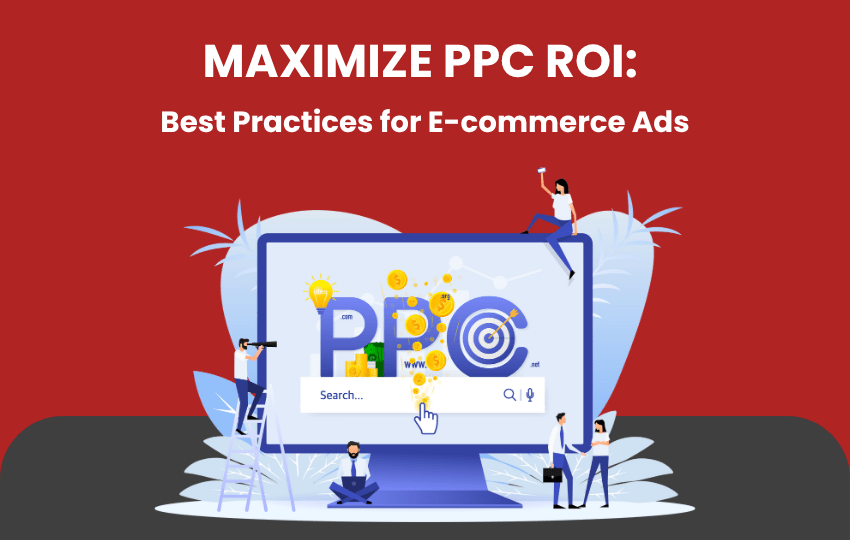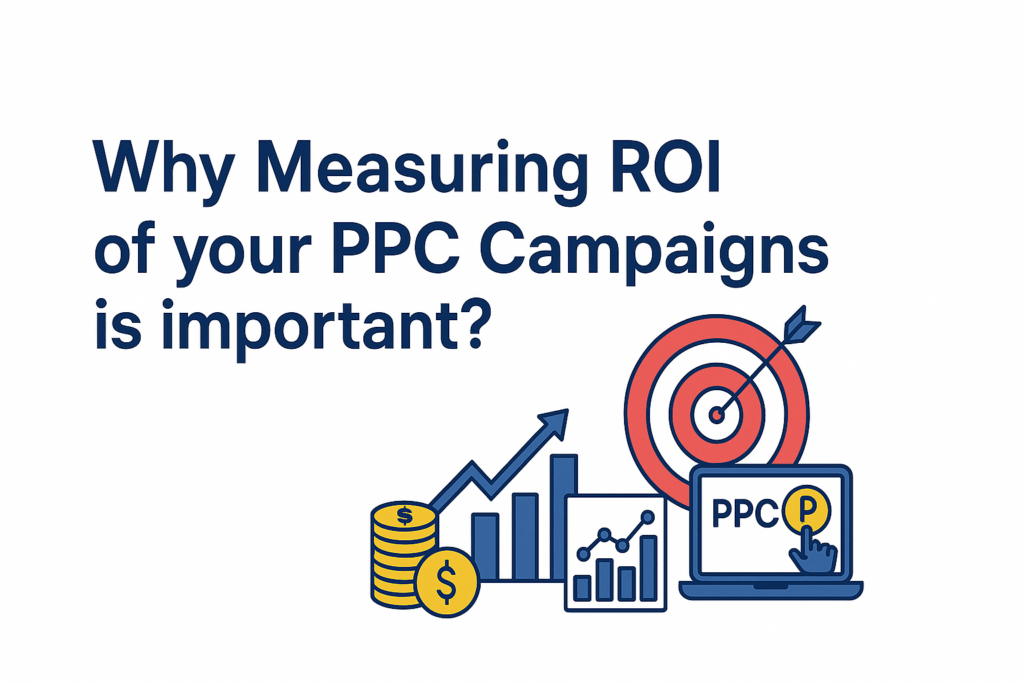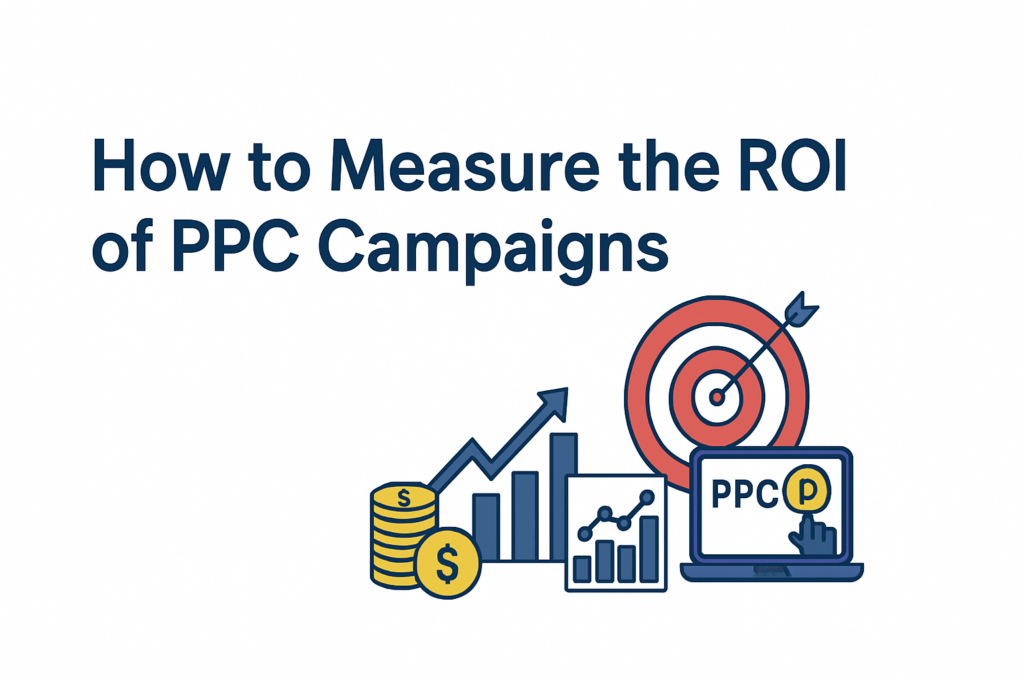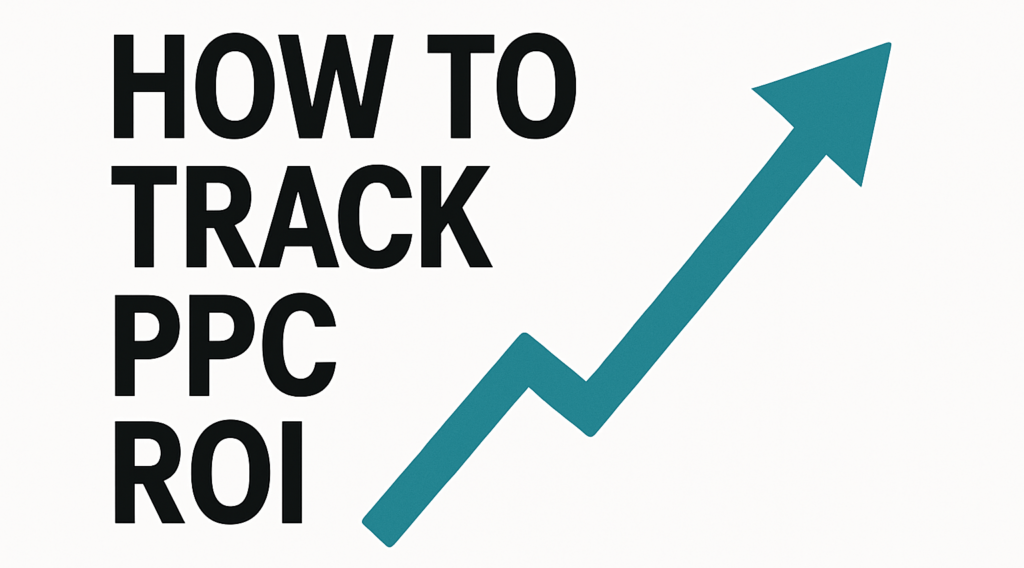
Maximize Your PPC ROI: Proven Strategies for E-commerce Success
Measuring the ROI of your e-commerce PPC campaigns is essential for optimizing ad spend and maximizing profitability. Without accurate measurement, you risk wasting budget on underperforming ads.
ROI (Return on Investment) helps determine whether your campaigns generate more revenue than they cost. By tracking key metrics like conversion rates, customer acquisition costs, and lifetime value, you can assess the effectiveness of your PPC efforts.
Advanced analytics tools, attribution models, and A/B testing further refine performance insights. Understanding ROI allows you to allocate budget efficiently, scale winning campaigns, and eliminate wasteful spending.
This article explores practical methods to calculate and improve PPC ROI for Online Stores, ensuring your advertising efforts drive sustainable growth and higher profitability for your e-commerce business.

Why Measuring ROI of your PPC Campaigns is important?
Measuring the ROI of your e-commerce PPC campaigns is crucial for several reasons:
- Optimizing Ad Spend – Measuring ROI ensures your budget is allocated to profitable campaigns. It helps eliminate wasteful spending on underperforming ads, allowing you to focus on strategies that generate maximum revenue and improve overall efficiency in your e-commerce PPC efforts.
For example, Seat Covers Unlimited, partnered with (un)Common Logic to enhance their paid shopping campaigns. By focusing on product feed expansion and strategic ad placements, they achieved a $1.2 million increase in paid shopping revenue year-over-year, maintained over 300% ROAS for seven consecutive quarters, and doubled their revenue within the first two years.
- Enhancing Campaign Performance – ROI tracking identifies high-performing ads and weak areas needing improvement. By analyzing conversion rates and ad effectiveness, you can refine your strategies, adjust bidding, and optimize creatives for better engagement and increased returns on your marketing investment.
For example, JLL (Jones Lang LaSalle), a global real estate services firm, implemented a measurement system with 16 KPIs, tripling marketing’s pipeline contribution and quadrupling revenue conversion while reducing resource usage by 11% and increasing effectiveness by 20%.
- Improving Customer Acquisition Strategy – Understanding ROI helps determine the cost-effectiveness of acquiring new customers. It reveals how much you spend per conversion and whether the lifetime value of customers justifies your ad costs, ensuring sustainable growth and profitability.
For example, RISA, a company specializing in structural design software, enhanced their sales and marketing efforts. By implementing HubSpot’s automation and data integration tools, they improved customer insights and ROI, leading to more effective customer acquisition and nurturing strategies.
- Scaling Profitable Campaigns – ROI insights enable you to scale successful campaigns confidently. By identifying top-performing ads, you can increase budget allocation, expand reach, and maximize profitability while discontinuing or optimizing low-performing ads to maintain a high return on investment.
For example, Apple’s exceptional customer service strategy ensures that customers receive support directly from trained representatives in their stores. This approach not only enhances the customer experience but also fosters loyalty, leading to sustained profitability and a strong ROI on their customer service initiatives.
- Gaining Competitive Advantage – Data-driven ROI measurement gives you an edge over competitors. By continuously optimizing campaigns based on revenue impact, you improve targeting, ad placements, and bidding strategies, ensuring better results and a stronger presence in the competitive e-commerce landscape.
For example, Nykaa, a prominent Indian beauty and personal care retailer, experienced a 61% surge in quarterly profit, reaching 261.2 million rupees ($2.99 million) for the quarter ending December 31, 2024.

How to Measure the ROI of PPC Campaigns
To measure PPC ROI, businesses need to track revenue generated from ads and compare it to the ad spend. Here’s how to measure PPC Campaign performance
ROI (%) = [(Revenue – Cost) / Cost] × 100
- Revenue – The total money earned from the PPC campaign (sales generated).
- Cost – The total amount spent on the PPC campaign (ad spend, fees, etc.).
- Revenue – Cost – This represents profit, the amount earned beyond what was spent.
Example
- You spent ₹1,000 on ads.
- You earned ₹3,000 from those ads.
Now, calculate profit:
₹3,000 – ₹1,000 = ₹2,000 profit
Now, apply the formula:
(₹2,000 ÷ ₹1,000) × 100 = 200%
This means for every ₹1 spent, you made ₹2 extra as profit!( 200% of 1 is 2)
Along with ROI, tracking Cost-Per-Acquisition (CPA) for E-commerce helps determine if ad spend aligns with profitability. A high ROI but an unmanageable CPA may indicate inefficient spending. It can be
CPA=Total Ad Spend/Total Conversions
You run a PPC campaign and spend ₹10,000 on ads. The campaign generates 200 conversions (sales or leads). So the CPA would be:
CPA=₹10,000/200=₹50
This means you are spending ₹50 to acquire each customer through your PPC campaign.

Benefits of Measuring PPC ROI
Tracking the ROI of PPC campaigns offers multiple advantages for e-commerce businesses:
✔ Better Budget Allocation – Measuring PPC ROI helps identify high-performing ads, ensuring ad spend is directed toward the most effective campaigns. This prevents wasted budget on underperforming ads and maximizes efficiency.
✔ Increased Profitability – Businesses can cut unnecessary costs by analyzing PPC ROI, allowing them to refine bidding strategies and eliminate wasteful spending. Optimizing ad spend enhances overall digital marketing efficiency, leading to higher profit margins.
✔ Data-Driven Decision-Making – Tracking PPC ROI provides valuable insights into customer behavior, ad engagement, and conversion patterns. Businesses can use this data to refine marketing strategies, adjust targeting, and improve ad creatives.

How to track PPC ROI
Tracking PPC ROI ensures your ad spend generates profitable results. Here’s how to effectively track and improve your PPC return on investment.
1. Define Goals & Track Conversions
Set clear PPC objectives like sales, leads, or traffic. Use Google Ads, Meta Ads, or third-party tools to track conversions accurately. Proper goal setting ensures measurable results and helps in optimizing campaigns for maximum ROI.
2. Calculate ROI & CPA
Use the formula:
ROI (%) = [(Revenue – Cost) / Cost] × 100
Compare ROI with Cost Per Acquisition (CPA) to evaluate profitability. Ensure CPA aligns with profit margins, adjusting bids and targeting accordingly. This is how you can calculate and track ROI for Google Ads.
3. Use UTM Parameters & Analytics
Apply UTM parameters in ad URLs to track campaign performance in Google Analytics. Monitor traffic sources, user behavior, and conversion paths to identify high-performing keywords and optimize ad spending effectively.
ROI Tracking Tools for E-commerce
Here are five best ROI Tracking Tools for E-commerce:
Tracks conversions, customer journeys, and revenue attribution across multiple channels. Provides insights into PPC performance and user behavior.
2. Google Ads Conversion Tracking
Measures ad-driven conversions, including sales and leads. Helps optimize bids and assess campaign profitability in real-time.
Tracks conversions from Meta Ads, including purchases, add-to-cart actions, and lead submissions. Enable E-commerce PPC ROI Analysis for social PPC campaigns.
4. Triple Whale
E-commerce-specific tracking tool that integrates with Shopify to provide real-time ROI insights across multiple ad platforms.
An advanced attribution tool that connects revenue data with PPC campaigns, helping e-commerce brands measure customer lifetime value and marketing effectiveness.
Best Practices To Increase ROI For PPC Campaigns
Audience Targeting & Segmentation
Use detailed audience segmentation based on behavior, interests, and demographics. Combine this with high-intent keywords to reach users most likely to convert. Implement retargeting and lookalike audiences to scale efficiently, reduce wasted spend, and boost ROI.
Example: Myntra used AI-driven personalized targeting, increasing ROAS by 37%.
High-Converting Ad Copy & Visuals
Create attention-grabbing headlines, persuasive copy, and visually appealing creatives. Address user pain points and highlight unique value propositions. Continuously A/B test to identify top-performing variations that drive higher CTR and conversions.
Smart Bidding Strategy Optimization
Utilize automated bidding options like Target ROAS or Maximize Conversions for better results. Regularly evaluate bid adjustments by device, location, and time to ensure strategic budget allocation and improved CPA.
Performance Monitoring & Keyword Refinement
Analyze performance metrics such as CTR, CPC, and conversion rate. Pause or eliminate underperforming ads and keywords, and double down on top performers to streamline your budget and boost efficiency.
Ad Personalization & Timing
Deliver dynamic ads personalized to user behavior, shopping stage, and browsing history. Schedule ads based on user activity patterns to maximize visibility and conversion potential during peak engagement times.
E-Commerce PPC ROI Analysis: A Simple Guide
Tracking the Return on Investment (ROI) of your PPC (Pay-Per-Click) campaigns helps ensure your ad spend generates real profits. Here’s how to analyze PPC ROI effectively without getting lost in formulas.
1. Track Important Metrics
Keep an eye on key performance indicators like sales, conversion rate, cost per acquisition (CPA), and customer lifetime value (CLV). Tools like Google Ads, Facebook Ads Manager, and Shopify Analytics help track E-commerce PPC Metrics and help to track E-commerce Sales Conversions.
2. Compare Ad Spend to Revenue
The simplest way to measure PPC success is by comparing how much you spend on ads vs. how much revenue they generate. If you spend ₹10,000 on ads and make ₹50,000 in sales, your PPC campaign is working well. But if your profit margins are low, you may need to optimize further.
3. Identify Your Best-Performing Channels
Different platforms (Google Ads, Facebook Ads, Amazon Ads) perform differently. If Google Ads brings more sales at a lower cost, you may want to increase spending there and reduce spending on underperforming platforms.
4. Optimize for Better ROI
- Improve Ad Targeting – Focus on high-intent customers who are more likely to buy.
- Refine Ad Copy & Creatives – Test different headlines, images, and offers to see what works best.
- Adjust Bidding & Budgeting – Increase spending on profitable ads and reduce spending on underperforming ones.
5. Track & Improve Continuously
PPC success isn’t a one-time effort. Regularly review campaign data, adjust strategies, and test new approaches to get the best return on your investment.
By consistently optimizing your PPC strategy, you can increase sales, reduce wasted ad spend, and maximize profitability.
Conclusion
Cybez is an e-commerce marketing agency that specializes in data-driven PPC strategies to maximize ROI. Our expertise in refining targeting, adjusting bidding strategies, and enhancing ad creatives ensures sustainable growth for e-commerce businesses.
If you’re looking to maximize the ROI of your PPC campaigns and drive higher profitability, partner with Cybez today. Let’s optimize your advertising efforts for sustainable success!

